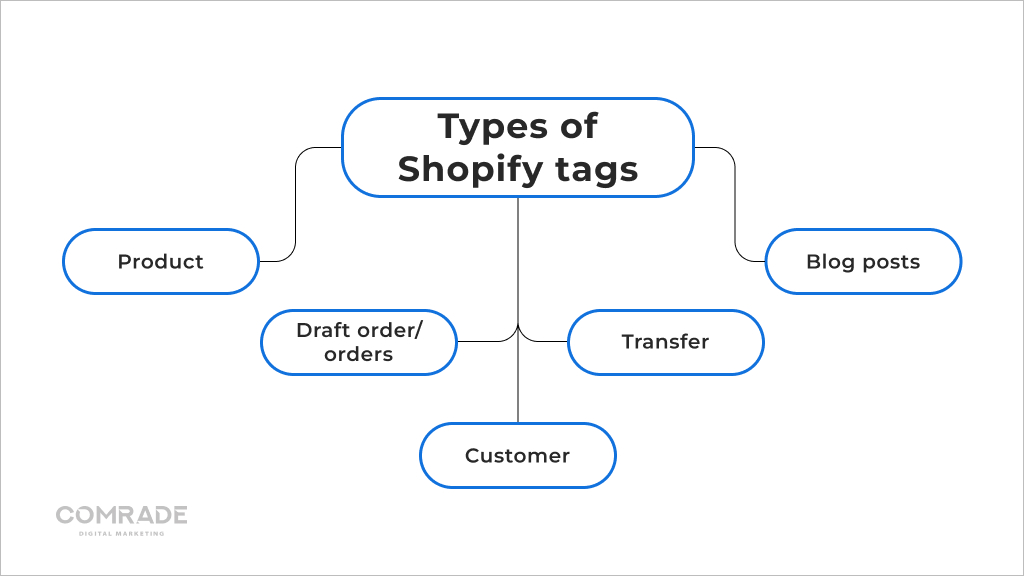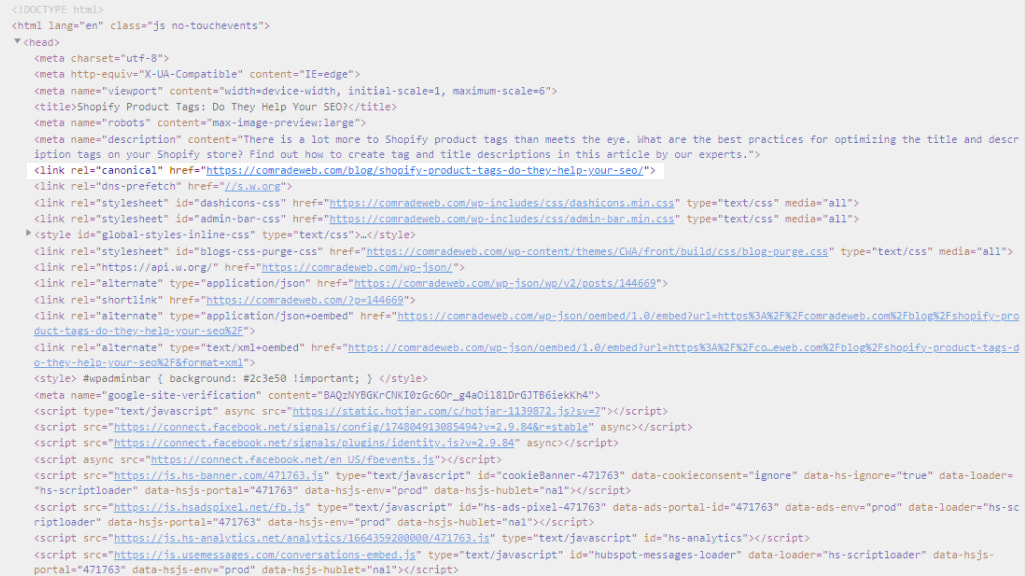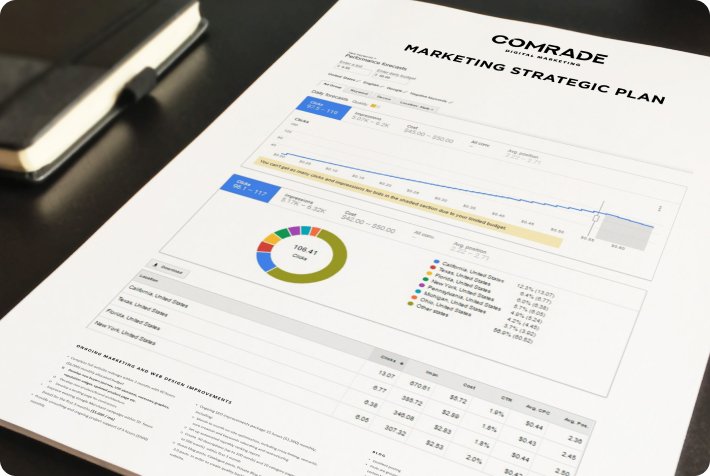Shopify merchants assume the success of their online stores has to do with the quality of their products. And there’s no doubt this is a major factor. After all, brands build their reputations by selling quality products people love. How on earth do you keep track and organize things? With Shopify product tags, of course!
These are labels you can add to your products to collect and organize them neatly. In this blog, we briefly explain everything you need to know about product tags and how they can help ensure the seamless running of your Shopify store.
What Is a Shopify tag?
Shopify tags are used to classify a variety of items, including products, customer data, orders, transfers, returns, and even blog posts. Customers can’t see Shopify tags, but merchants can categorize products in their stores and refine search results by using them.
Are Shopify Tags Important?
An important part of any Shopify store are its product tags. In addition to categorizing and organizing products, they can also be used to create special collections and filters. SEO (search engine optimization) also depends on product tags.
As a Shopify merchant, creating custom tags offers the following benefits:
Deliver More Accurate Search Results
Shopify product tagging serves customers with the most relevant products. Shopify lets you have up to 250 tags which allows customers to find what they need based on thematic instead of actual product queries. By providing customers with the most relevant products, you improve customer experience and increase the chances of them making a purchase.
Offer Personalized Experiences
We all know that eCommerce relies heavily on personalization. Marketers are always reaching out to customers based on their buying history, content consumption and general online behavior. With additional product tagging, you have the potential to create even more accurate recommendations, drawing customers to particular items that pique their interest.
Accurately Systemize Products
Shopify product tag helps store owners differentiate products and keep them organized. For online merchants who sell a variety of products, it eventually becomes challenging to keep track of everything, especially when the same product has multiple variations. Thankfully, tagging products makes sure they are stored correctly. You also don’t have to manually check how many you have in stock or where it’s located.
An Improved and Optimized Product Catalog
Tagging automation reduces human error and saves time. AI-powered product tags reveal exactly which products are selling fast, what styles are trending, and which products should be discontinued. This data helps you make better business decisions around what you should be selling and what types of product recommendations your customers respond to.
Different Types of Shopify Tags

Although we’re focusing on creating product tags, it’s helpful to know the different types of custom tags you can create on Shopify.
- Product. Allow you to group products into categories or collections. You can describe a product’s features by color, season, price range, or any other search term your customers use.
- Draft Order / Orders. Group orders with similar expected delivery dates, fulfillment regions, and more, to ensure your fulfillment team delivers goods as expected.
- Customer. Create marketing campaigns or personalized communications based on different customer segments. You can also label customers “problematic” or “VIP,” for example.
- Transfer. Add tags to incoming inventory for things that are urgent or recurring.
- Blog posts. Categorize your blog posts according to theme or products with different tags.
How Product Tags Work
It’s actually pretty simple. Let’s say you run a home decor store and choose to use tags to indicate the color, material, and types of products you sell.
For example, you use the tags ceramic, porcelain, glass, mug, vase, and terracotta. Because your online store uses tags filters on its collection pages, a customer can then see all the products that match this tags these tags.
You can also create an automatic collection that uses these tags as grouping conditions.
Product Tag Guidelines
Keep your product tags simple and easy to understand, and only use ordinary letters, numbers, and hyphens as special characters are usually ignored.
Some store themes showcase tags to customers in drop-down menu filters; therefore, they must make sense to customers.
For example, let’s say you want to create a tag for your 2024 summer clothing collection. Summer-Clothing-2024 makes more sense than mysummerclothes23.
Lastly, keep tags short for increased usability. Shopify allows product tags to have up to 255, but we recommend keeping them as short as possible. Depending on the products you sell you might be able to get away with 16 characters.
How to Create or Remove Shopify Tags
Follow these simple steps to create custom tags:
- Go to Shopify admin and select the Products tag.
- Click on the specific product you wish to add the tag to.
- Enter the tag name in the Tags section or choose an existing tag from the Tag list in View all tags. Use a comma to separate tags. If your tag is new, it will automatically be saved.
- Finally, click Save.
Just like the above steps:
- If you want to remove product tags, you need to go to the Shopify admin and then the products page.
- Then select the specific product you wish to remove the tag from.
- Scroll down to the Organization section and click the x next to the tag you intend to remove. The tag will only be removed from the product detail page you open, and won’t affect other product pages.
Are Shopify Product Tags Good for SEO?

Shopify product tags aren’t utilized by search engines, and they don’t rank in Google SERPs. Their main role is relegated to organizing products inside your online store.
However, Shopify product tags can be used as keywords on your web pages’ content, meta tags, and URLs. As such, search engines treat them like normal page content; therefore, you have to be careful, since if those tags represent a large percentage of the page’s content, Google may incorrectly presume you are keyword stuffing.
Another thing to keep in mind is individual product tags have their URL on Shopify, which can lead to duplicate content issues. For example, using categories or brands in your product tags may not be a good idea because they already exist as separate pages on your website.
If Google finds two URLs for the same category, it won’t know which is the correct one to index and might end up disadvantageously showing the product tag page, which has a limited number of products. Therefore, we advise never using categories or brands as Shopify tags.
Overall, if your product description is missing crucial information, adding it in product tags might provide some minor SEO benefits. However, it’s much better to include keywords in meta tags and product descriptions, i.e. where target keywords normally are, and optimize product tags and URLs only when necessary and if relevant.
How to Enhance Shopify SEO With Product Tags
A shopify product tag can generate more sales for your business. We should stress their main purpose is to make online store navigation easier and streamline inventory management. Optimizing product tags alone can’t replace robust SEO efforts.
We recommend following these tips only if they make sense for your store. Not every product tag will present an SEO opportunity, so use your discretion.
Use rel=”canonical” to Differentiate Duplicate Content

We mentioned earlier you risk duplicate content because individual product tags have their own URLs. To prevent them from being indexed as duplicate content by Google, you can use a canonical tag (rel=”canonical”_) to tell the search engine which page is the original. This way, Google bots only crawl one of the pages, and users can find other products on your tagged collections pages.
Create Collections
Product collections are more appealing than single products because they offer variety to customers. This retail strategy allows you to upsell products and boost sales. Collections also sometimes come with special offers like discounts or special edition products.
Shopify provides the opportunity to create automatic collections, whereby you specify conditions (up to 60) that group products together. In terms of SEO, if you handle your collections properly, you can communicate important semantic data to search engines via your internal link structure and folder architecture.
This helps Google and other search engines understand the kind of queries your product pages and categories are relevant for.
An Aside: The Difference Between a Shopify Tag and a Collection Page
Collections are groups of products grouped together by category, whereas tags are internal organization tools, like a cross-reference system. Tags are used to create automated collections or set up product filtering, or even create email sequences based on purchases.
Use Keywords in Product Tags
Certain Shopify themes list product tags on product pages, and they become page content crawled by search engine spiders. So, if your tags are listed in the main product area, the content on the page can impact your SERP ranking.
Similarly, using a product tag as a keyword and page title can enhance SEO, so long as there’s no keyword stuffing. When it comes to Shopify tags, it’s advisable to tag products with keywords used by your target audience.
You should do market research before you create custom tags. It’s also super important to add tags according to a product’s function and physical attributes. For example, “cream, white, serving dish.”
Filter by Tag
To streamline your navigation on the Products, Transfers, Blog posts, Orders, and Draft orders pages, you can utilize tags to filter the lists. Additionally, for the Inventory page, product tags can be used to filter the list of variants for a more efficient workflow.
Insert Optimized Products Tags in Meta Tags, URLs, and Web Page Content
Web Page Content
You can also optimize your online business by using existing tags in page content and product descriptions, so long as the product tag aligns with your customer queries and doesn’t appear more than 20 times.
Even 20 relevant tags should only comprise a small portion of the content on your web page, as most should come from compelling product descriptions, blog posts, and other marketing material.
Shopify Tags Meta Descriptions
While not strictly page content, you can also optimize Shopify meta descriptions with product tags. These are the small blurbs that appear underneath your website URL on SERPs and provide additional information about your product pages.
Naturally, your meta tag titles should be SEO-friendly. Every page on your Shopify website should have a unique title tag (not to be confused with tags in Shopify) that describes what the page is about.
For example:
- Title: Genuine Mid-Century Coffee Tables
- Meta Description: Browse our selection of one-of-a-kind vintage mid-century coffee tables sourced from Europe and North America.
In this fictitious example, “mid-century coffee tables” is both a keyword and product tag. While Shopify permits 70 characters per title tag, Google will only display the first 50-60 characters, so it’s best to keep your tags in Shopify below this.
Shopify Tags in URLs
We mentioned earlier that all Shopify product tags receive a URL.
For instance, https://www.example.com/collections/[collection]/[tag].
Unless you use canonical tags, the keywords in these URLs need to be unique; otherwise, you’ll suffer duplicate content. Using “clean” SEO-friendly URLs is encouraged by Google.
For example, if you were selling toy cars, it would be advisable to use the URL:
- www.yourdomain.com/toy-car-ferrari
And not:
- www.yourdomain.com/prdsf/ct/8e7e8ph=re454
Always ensure your store’s URLs are intelligible and include a focus keyword, if this happens to be a product tag, then it’s an added bonus. This helps search engines and humans understand what your content is about.

Comrade Will Help You Optimize Shopify Tags for SEO
If you use Shopify product tags discerningly, they can boost SEO. While creating automated collections and tags in Shopify only takes a few minutes, it’s your strong product descriptions that improve sales in the long term.
We’re an eCommerce digital marketing agency specializing in Shopify website development and SEO. If you want to know how best to manage Shopify product tags or improve your online store search capabilities, or anything else Shopify-related, then we can help. Why not start with a free eCommerce consultation?
Do Shopify tags improve SEO?
SEO definitely benefits from product tags in Shopify. On-page SEO for eCommerce relies heavily on product tags. You can use them to help search engines understand what your products are and how they relate to others on your site. In addition, they assist shoppers in finding the products they need.
What are product tags example?
A product tag is a keyword that identifies a product. This allows a specific, narrow search for products based on a particular feature. In the case of apparel, you can put tags such as "tee shirt," "cotton," and "polo" on T-shirts.




